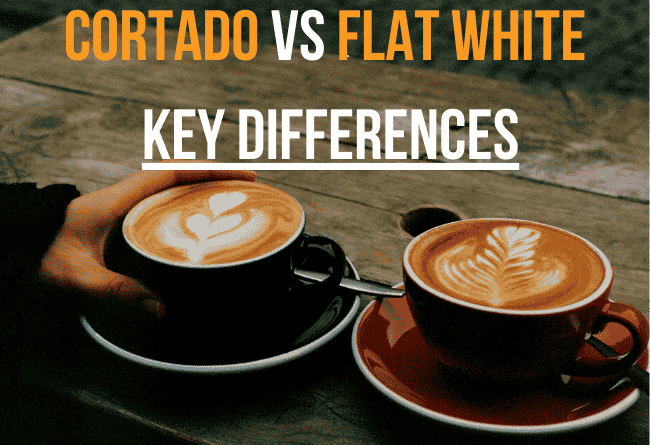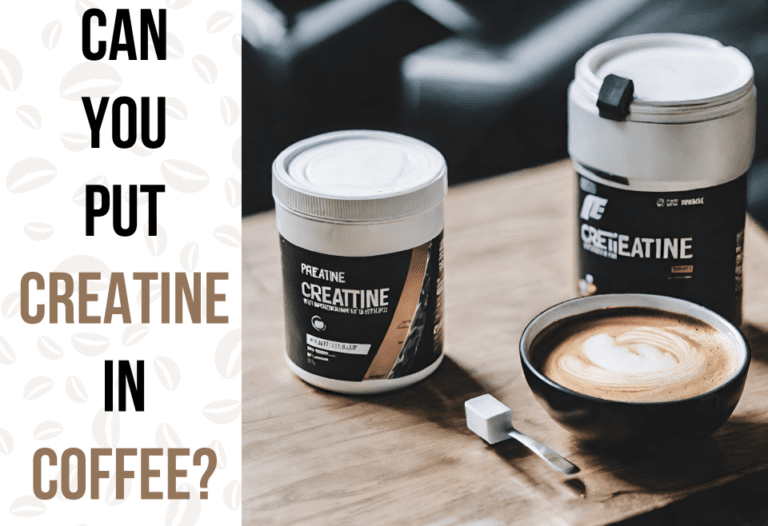How Many Calories in Iced Coffee? Tips for Healthier Iced Coffee
Coffee Queries is reader-supported. When you buy through links on our website, we may earn an affiliate commission. Learn More
Iced coffee can be a refreshing beverage, particularly during the warmer seasons. However, if you’re watching your calorie intake, it’s beneficial to know the caloric value of this popular drink. You might wonder if your favorite iced coffee drink contributes many calories to your daily intake.
As with most food and beverages, the calorie count in iced coffee can vary greatly, depending on several factors. Let’s begin our guide to How Many calories are in iced coffee.
Learn What should your daily intake of calories be according to NHS
Calories In Iced Coffee
Basic iced coffee, typically made from just coffee and ice, contains minimal to no calories. This is because coffee has almost no calories without additives like sugar or cream. For instance, a 16-ounce iced coffee contains fewer than 5 calories and no significant amount of fat or carbohydrates. Moreover, a regular 8-ounce iced coffee cup contains as low as 2 calories.
Note: The above calorie count will change if you add cream, milk, sugar, or other sweeteners or flavorings to your iced coffee, which we will discuss later in this article.
Calorie Content in Iced Coffee Based on Type
Let’s discuss the calorie content of iced coffee according to its type and additional ingredients.
1: Black Iced Coffee
One of the greatest attributes of black iced coffee is its remarkably low-calorie count, which is around 2-10 Kcal on average. Why? The answer is simple – black iced coffee is typically served without added cream, sweeteners, or milk.

Black iced coffee’s calorie content is almost negligible compared to other popular beverages, especially sugary sodas, fruit juices, and creamy coffee concoctions. This makes it an excellent choice for individuals watching their calorie intake, following weight loss diets, or just aiming for a more health-conscious beverage option.
Drinking black iced coffee allows coffee enthusiasts to enjoy the rich flavors and aromatic experience of coffee without any significant calorie addition to their daily intake.
Let’s get a little more specific.
- Home-brewed Black Iced Coffee: Home-brewed black iced coffee usually contains around 2 to 9 calories per 8-ounce serving, as long as no sugar or other sweeteners are added. The calorie content can vary slightly based on the coffee beans’ richness and brewing method.
- Commercially Prepared Black Iced Coffee: Commercially prepared black iced coffee typically comes in different sizes and based on its preparation method. For an 8-ounce serving, you can expect anywhere from 2 to 20 calories. Again, these values can fluctuate based on the specific brand and preparation method.
Editor’s Pick: Best Coffee Makers for Iced Coffee
2: Milk Iced Coffee
An 8-ounce iced coffee with whole milk typically contains around 155-160 calories. However, the numbers vary if you opt for a larger serving size or decide on a different milk choice.
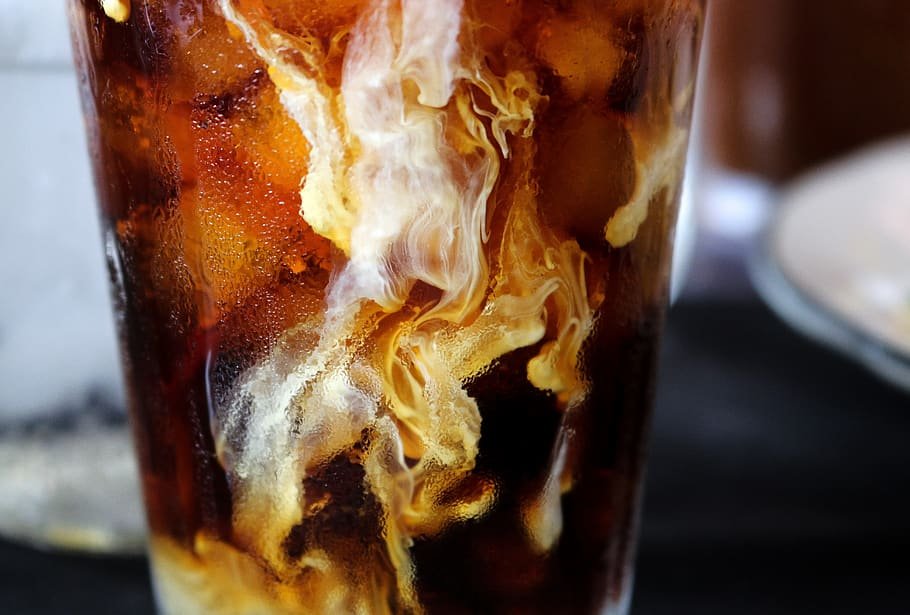
Here’s an exploration of the calorie content in iced coffee when different types of milk are added:
Whole Milk:
Roughly 19 calories per ounce (30 milliliters). Whole milk adds a creamy texture and slightly sweet taste to iced coffee. It’s the most calorie-dense of the common milk types due to its fat content.
2% Milk (Reduced-Fat)
About 15 calories per ounce (30 milliliters). It offers a balance between the creaminess of whole milk and the lower calorie content of skim milk.
Skim Milk (Non-fat)
Approximately 10 calories per ounce (30 milliliters). It provides a lighter texture to iced coffee with the least amount of calories among traditional dairy milks.
Almond Milk (Unsweetened)
Roughly 7 calories per ounce (30 milliliters). Unsweetened almond milk is a popular non-dairy alternative that adds a nutty flavor with fewer calories than most dairy options.
Soy Milk (Unsweetened)
Around 10 calories per ounce (30 milliliters). Another non-dairy alternative that offers a slightly thicker texture and unique taste, soy milk’s calorie content is on par with skim milk.
Oat Milk (Unsweetened)
Approximately 15 calories per ounce (30 milliliters). Oat milk has gained popularity recently for its creamy consistency and sweet taste, even when unsweetened.
Coconut Milk (Beverage, Unsweetened):
About 5 calories per ounce (30 milliliters). This non-dairy alternative imparts a distinct coconut flavor to iced coffee and has one of the lowest calorie content.
When choosing milk to add to your iced coffee, it’s essential to account for its calorie content and flavor profile. The calories mentioned above are approximate and can vary based on brands, preparation methods, and added ingredients. It’s always a good idea to check the nutrition label of your specific milk product.
Suggested Reading: Does Iced Coffee Make You Poop? Know The Truth
3: Iced Coffee With Milk And Sugar
An iced coffee with milk and sugar could range anywhere from 90-150 calories based on your preferences – or even more if you’re generous with your sugar portion.

Iced coffee with milk and sugar is a popular option for those who want a sweet, creamy boost. The calorie content increases notably when both ingredients are added to iced coffee. An 8-ounce (240-milliliter) serving of iced coffee with 2 ounces of whole milk and 1 tablespoon of sugar typically contains around 89 calories: 2 calories from the coffee, 38 calories from the milk, and 49 calories from the sugar.
However, the specific caloric value can vary based on the type and quantity of milk and sugar used. Non-fat milk or milk alternatives generally have fewer calories than whole milk, and using less sugar or a sugar substitute can also reduce the calorie count.
4: Iced Coffee With Flavored Syrups
Flavored syrups can significantly elevate the caloric content of iced coffee. They infuse the drink with different tastes and aromas, but they often contain high sugar.
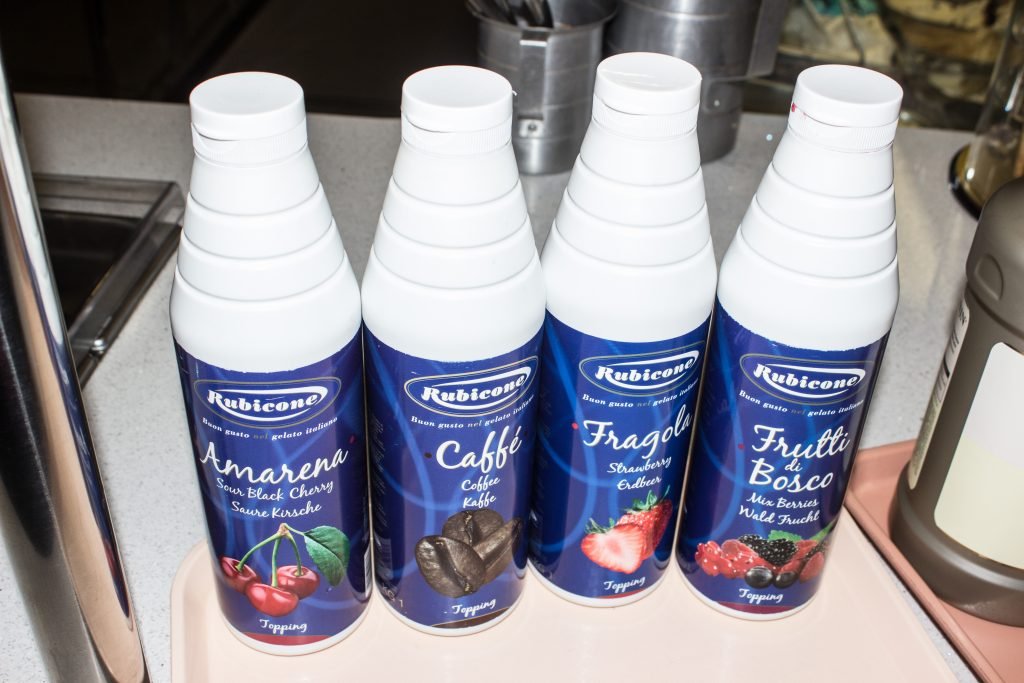
Most flavored syrups contain between 50 and 70 calories per tablespoon (15 milliliters), depending on the sugar content and other ingredients. Some common flavors include:
- Vanilla: Around 50-70 calories per tablespoon.
- Hazelnut: Approximately 50-60 calories per tablespoon.
- Mocha or Chocolate: Usually 60-70 calories per tablespoon.
- Peppermint: Roughly 50-60 calories per tablespoon.
Suppose you add just one tablespoon of regular flavored syrup to your iced coffee. In that case, you add an extra 50 to 70 calories, making the total approximate caloric content 52 to 72 calories for an 8-ounce serving.
| Type of Iced Coffee | Approximate Calorie Content (8 ounces) |
| Black Iced Coffee | 2 calories |
| Iced Coffee with 1 tbsp Sugar | 51 calories (2 + 49 from sugar) |
| Iced Coffee with 1 oz Whole Milk | 21 calories (2 + 19 from milk) |
| Iced Coffee with 1 oz Skim Milk | 12 calories (2 + 10 from milk) |
| Iced Coffee with 1 oz Unsweetened Almond Milk | 9 calories (2 + 7 from almond milk) |
| Iced Coffee with 1 tbsp Whipped Cream | 54 calories (2 + 52 from whipped cream) |
| Iced Coffee with 1 oz Cream (half-and-half) | 39 calories (2 + 37 from cream) |
| Iced Coffee With Milk And Sugar | 89 Calories (2 + 49 from sugar and 38 from the whole milk) |
Related: A Cool Comparison: Iced Coffee vs Cold Brew
What impacts the calorie content in Iced Coffee?
Iced coffee’s calorie content can vary significantly based on several factors. Here are some of the primary factors that can impact the calorie content of iced coffee:
Base Coffee
When black and without additives, the coffee itself has very few calories. A standard 8-ounce (240-milliliter) cup of black coffee contains only about 2 calories, primarily from trace amounts of protein and oils in the coffee.

Sugars and Sweeteners
Adding sugar or flavored syrups to iced coffee can significantly increase the calorie count. For instance, a single tablespoon of granulated sugar contains about 49 calories.
Milk and Cream
The type and amount of milk or cream added to iced coffee also plays a significant role in its calorie content. Whole milk, half-and-half, and heavy cream have more calories than skim or low-fat milk.
Non-dairy alternatives like almonds, soy, oats, and others will have varying calorie counts, often depending on whether they are sweetened.
Flavored Syrups and Sauces
Many iced coffee drinks include flavored syrups or sauces like vanilla, caramel, mocha, or hazelnut. These can add a substantial amount of calories to the glass. For example, adding vanilla syrup to your iced coffee can increase the calorie count to 35.
Toppings
Some iced coffee beverages may have toppings like whipped cream, chocolate shavings, caramel drizzle, or even cookie crumbs. These toppings can contribute additional calories up to 50-80.
Size of the Drink
Obviously, the larger the size of the drink, the more calories it can contain, especially if it’s loaded with sugar, milk, and other flavorings.
Type of Coffee
Some coffee brewing methods might result in slightly different calorie counts. For instance, cold brew coffee can sometimes be more concentrated than regular drip coffee, potentially leading to a few more calories. However, this difference is typically negligible unless additives are involved.
Additional Ingredients
Some iced coffee variations might include chocolate chips, ice cream, or flavored powders, which can further increase the calorie count.
How To Lower The Calories In My Iced Coffee?
Here’s how you can lower the calories in your iced coffee:
Opt for Black Coffee
Pure iced coffee without additives contains nearly 2 calories for an 8-ounce cup. By enjoying black, you can savor the coffee’s taste without extra calories.
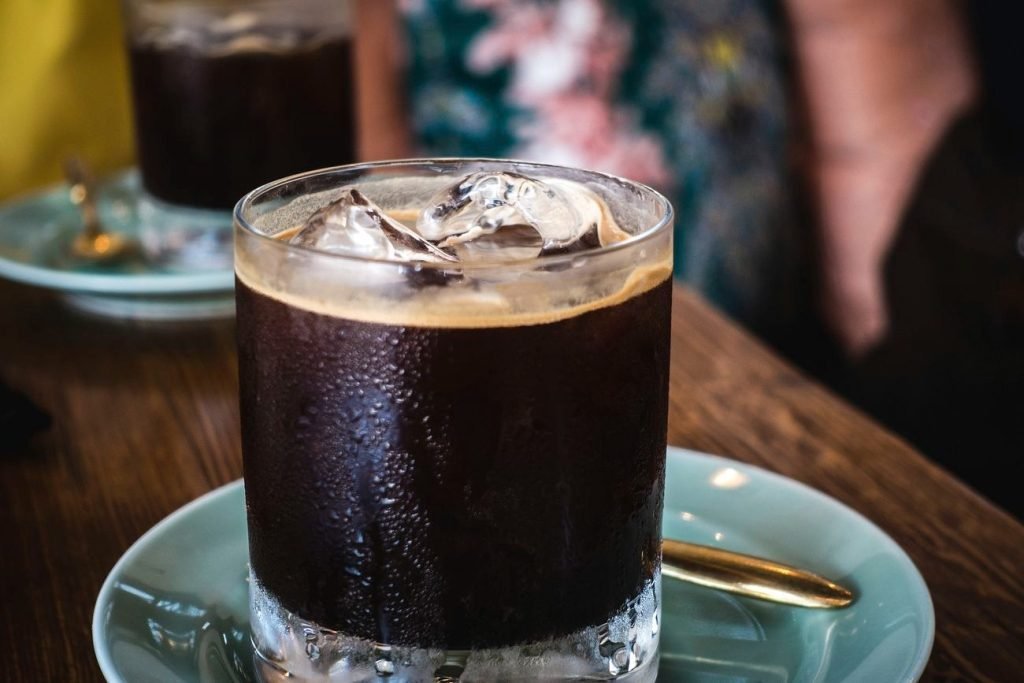
Use a Zero-Calorie Sweetener
Instead of using granulated sugar (around 49 calories per tablespoon), switch to zero-calorie sweeteners like stevia or erythritol for a sweet taste without the calories.
Choose Low-Fat or Non-Dairy Milk
An ounce of whole milk adds about 19 calories, while skim milk adds just 10 calories. Alternatives like unsweetened almond milk can have as few as 7 calories per ounce.
Skip the Toppings
A tablespoon of whipped cream can add about 52 calories. By forgoing whipped cream or caramel drizzle, you maintain a lower-calorie beverage.
Control Serving Size
A typical coffeehouse “small” might be 12 ounces, but sizes can go up to 24 ounces or more. Sticking to a smaller serving can help you save on calories, especially if additives are involved.
Editor’s Pick: How To Make Iced Coffee In A Keurig?
Conclusion
Iced coffee’s calorie content can vary widely based on its ingredients and serving size. Coffee contains negligible calories, but additives like sugar, milk, syrups, and toppings can substantially increase its caloric value. To make healthier choices:
- Opt for black coffee when possible.
- Consider zero-calorie sweeteners as a substitute for sugar.
- Choose low-fat, non-dairy, or unsweetened milk alternatives.
- Forego calorie-rich toppings.
- Be mindful of serving sizes, especially when ordering from coffeehouses.
By being informed and making conscious choices, you can enjoy iced coffee’s refreshing taste without compromising your dietary goals.


